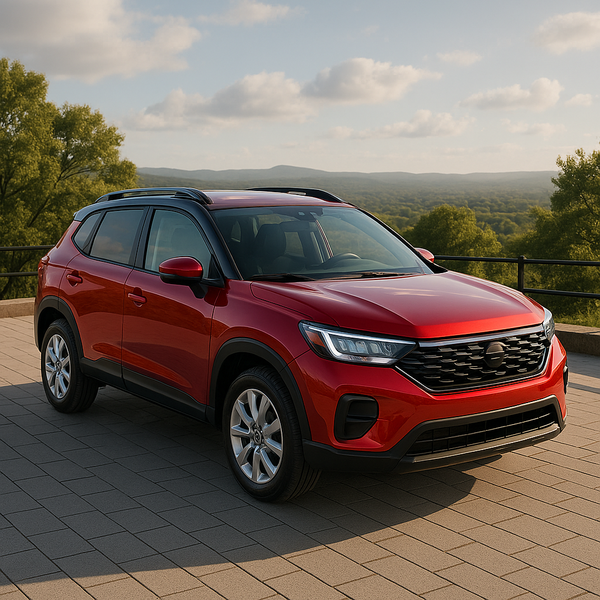
Compact SUVs have rapidly become a dominant force on roads worldwide, appealing to a broad spectrum of drivers. These vehicles strike a compelling balance, offering more space and a higher driving position than traditional sedans, while remaining smaller and more fuel-efficient than their larger SUV counterparts. Their popularity stems from their adaptability, fitting seamlessly into diverse lifestyles, from urban commuting and navigating tight parking spots to weekend getaways with friends or family.
What Defines a Compact SUV?
At its core, a compact SUV is typically built on a car platform (like a sedan or hatchback), giving it car-like handling and ride comfort. They are generally smaller than mid-size or full-size SUVs, making them easier to maneuver and park, especially in crowded city environments. While classifications can vary slightly by manufacturer and market, they generally fall into a segment above subcompact SUVs and below mid-size SUVs. Their raised ground clearance often provides better visibility and a feeling of security compared to lower-riding vehicles.
Key Benefits of Compact SUVs
One of the most significant advantages is their versatility. They offer a blend of passenger space, cargo capacity, and practicality that resonates with many buyers. Compared to sedans, they provide easier entry and exit, more headroom and legroom for rear passengers, and significantly more flexible cargo space, often expandable by folding down the rear seats. This makes them ideal for hauling groceries, luggage, sports equipment, or even furniture.
Fuel efficiency is another major draw. While not typically as fuel-efficient as sedans or hatchbacks of similar size, compact SUVs generally offer better gas mileage than larger SUVs or trucks. Advancements in engine technology, hybrid options, and aerodynamic designs have further improved their efficiency, making them a more economical choice for daily driving.
Maneuverability is paramount, especially for drivers in urban or suburban areas. Their relatively small footprint allows them to navigate narrow streets and fit into parking spaces where larger vehicles would struggle. This ease of handling makes them less intimidating to drive than bigger SUVs, providing a confident experience behind the wheel.
Many compact SUV models offer available all-wheel drive (AWD) systems. While not designed for extreme off-roading, AWD provides enhanced traction and stability in adverse weather conditions like rain, snow, or ice. This added capability can provide peace of mind for drivers living in areas with variable climates.
Comparing Compact SUVs to Other Vehicle Types
How do compact SUVs stack up against other popular segments? Compared to sedans, they offer more utility, a higher driving position, and often optional AWD. However, sedans typically provide a more car-like ride, potentially better fuel economy, and often a lower purchase price. The choice often comes down to prioritizing cargo space and ride height over ultimate fuel efficiency and a lower center of gravity.
Versus larger mid-size or full-size SUVs, compact models are smaller, more fuel-efficient, and less expensive. Larger SUVs offer more seating capacity (often three rows), greater towing capability, and potentially more robust off-road features. Compact SUVs are better suited for individuals, couples, or small families who don't need extensive seating or heavy towing capacity but still require more space than a sedan.
Subcompact SUVs are smaller and generally more affordable and fuel-efficient than compact SUVs. However, they offer less passenger and cargo space. The decision between a subcompact and a compact SUV often hinges on how much interior volume and comfort is needed.
Key Features to Consider When Choosing a Compact SUV
When exploring compact SUVs, several features are worth considering:
Interior Space and Comfort: Pay attention to legroom, headroom, and shoulder room for both front and rear passengers. Consider the comfort of the seats and the overall cabin layout.
Cargo Capacity and Versatility: Look at the volume of the cargo area with the rear seats up and folded down. Consider the shape of the cargo area and features like a low liftgate height or adjustable cargo floor.
Infotainment and Technology: Modern compact SUVs come equipped with various tech features, including touchscreen displays, smartphone integration (Apple CarPlay, Android Auto), navigation systems, and charging ports. Consider which features are important for your daily needs.
Safety Features: Many models offer advanced driver-assistance systems (ADAS) such as automatic emergency braking, lane-keeping assist, blind-spot monitoring, and adaptive cruise control. Research safety ratings from organizations like the NHTSA or IIHS.
Engine Options and Drivetrain: Consider the available engines (gasoline, hybrid, electric) and their power, fuel efficiency, and whether front-wheel drive (FWD) or all-wheel drive (AWD) is available or necessary for your needs.
Ride and Handling: Test driving different models is crucial to evaluate the ride quality, handling characteristics, and how it feels to drive in various conditions.
Popularity and Market Trends
The popularity of compact SUVs shows no signs of slowing down. Manufacturers are continuously innovating, introducing new models with updated technology, improved efficiency, and enhanced safety features. The segment is also seeing a significant shift towards electrification, with many brands offering hybrid or fully electric compact SUV options, catering to growing environmental consciousness and reducing running costs.
The variety within the compact SUV segment is vast, offering options across different price points, styles, and feature sets. Whether you prioritize fuel economy, advanced technology, cargo space, or all-weather capability, there is likely a compact SUV that aligns with your specific requirements and preferences.
Compact SUVs offer a compelling blend of practicality, versatility, and modern features, making them an excellent choice for a wide array of drivers. Their ability to handle diverse driving needs, from urban commutes to weekend adventures, combined with improving fuel efficiency and advanced technology, solidify their position as a leading vehicle segment. Exploring the various models available allows buyers to find a vehicle that perfectly fits their lifestyle and transportation needs for years to come.

